Each grower should be aware that caring for indoor plants is not only about watering and fertilizing, but also involves protection from pests. One of them is thrips, which, in the absence of control, can cause serious harm to plants, therefore, at the first signs of their appearance, it is necessary to start acting urgently.
Content
Description
Recognizing thrips is not that difficult. They look like small insects, which have an elongated body up to 2 mm long, light yellow, black or dark brown. In adults, it is usually found two pairs of wings with long hairs... The larvae of the pest have a light yellow body, and do not exceed 1 mm in length.
An additional clue about the presence of thrips can be the nature of their movement: adults move very quickly, often making sharp jumps with the help of their belly. The difference between males and females is that the former have a slender, but not so long body. They are also painted in different colors.
Thrips can also be distinguished by their wings: in some species they can be quite short, in others they may not be at all.
Thrips are one of the many pest groups that include over 2000 varieties... We have about 200 species in our country. Their main habitats are leaves, flowers and buds of indoor plants. They feed on the nectar and sap of the leaf tissue.
Thrips are dangerous because they multiply very quickly. As a place for laying eggs, leaf tissue or flowers are used. After 10 days, new offspring appear from the eggs. However, so that the larvae can turn into adult insects, it takes one month... At this moment, a great threat appears to plants, since as a result of the activity of pests, they lose their attractiveness, begin to be affected by viral diseases. Over time, when the insects drink all the juices from one plant, they move to others located in the neighborhood.
How to find thrips on indoor plants?
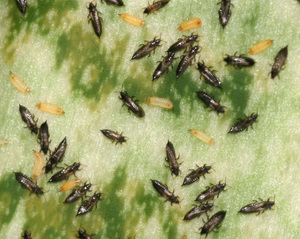 If, during the inspection of indoor plants, you find that some of the leaves have discolored, as well as on them there are many pointscaused by punctures, this is a clear sign that thrips have started up in your apartment.
If, during the inspection of indoor plants, you find that some of the leaves have discolored, as well as on them there are many pointscaused by punctures, this is a clear sign that thrips have started up in your apartment.
If you pay attention to the lower part of the leaves, then there you can find spots of a brownish or brownish tint. The damaged areas often turn silvery, which can be explained by the ingress of air into the cells.
If, at the first sign of thrips activity, prompt treatment is not taken, subsequently foliage dies, deformation of flowers and buds. Insects cause additional harm by depositing sticky secretions, which are a favorable environment for the development of a sooty fungus. Although thrips are not picky about food, the most preferred houseplants for them are violets, begonias, roses, citrus fruits, orchids and ficuses.
Most violets suffer from thrips larvaeas they destroy the flower's anther. At the first signs of their appearance, it is necessary to cut off all flowers and buds within the next 1.5 months, combining this with treatment with suitable preparations.
Common types of thrips
The first information about the existence of thrips was obtained back in 1744, when Karl de Geer discovered these pests. Today, people have become more aware of the species diversity of these pests, among which you can highlight special typesmost often affecting ornamental plants:
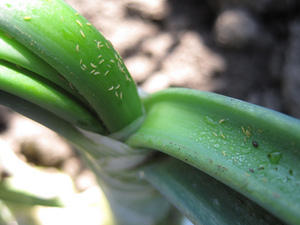 western (California) flower thrips. This is a tropical species that can be found only in some regions of our country. The first fact of his presence was confirmed in St. Petersburg, when seedlings of carnations and chrysanthemums were delivered there. Today it is found in several dozen greenhouses and greenhouses;
western (California) flower thrips. This is a tropical species that can be found only in some regions of our country. The first fact of his presence was confirmed in St. Petersburg, when seedlings of carnations and chrysanthemums were delivered there. Today it is found in several dozen greenhouses and greenhouses;- tobacco thrips. This pest lives in the middle belt and southern regions of our country. Here it is found on various ornamental plants grown in greenhouses and greenhouses. The insect itself is small, reaches a length of no more than 1 mm, has a light yellow or brown color;
- decorative thrips. It is most widespread in the northern regions and the middle zone of our country. Threats to many indoor plants. Most of all, orchids, monstera, dieffenbachia and certain types of palms suffer from this pest. It can be identified by its dark brown color, as well as a small body, which has a length of 1.5-2 mm;
- dracaena thrips. Most often it can be found indoors in the northern regions. Hibiscus, ficus, dracaena and a number of indoor plants suffer more from it. The characteristic color of the pest is yellow-brown, the body is about 1 mm long;
- variegated (common) thrips. This species is represented in most of our country. The main food for him is flowers and buds of indoor plants. It looks like an insect of dark brown color, reaching a length of just over 1 mm;
- rose thrips. Its favorite habitats are rosaceous plants. A characteristic feature is a brown body, up to 1 mm in length;
- bulbous thrips. This species is represented in most of our country. Most often it can be found among the scales of lily plants. It can be identified by its dark brown color and body up to 2 mm long.
How to get rid of thrips on indoor plants?
Realizing that your indoor flowers are already affected by thrips, you urgent action should be taken:
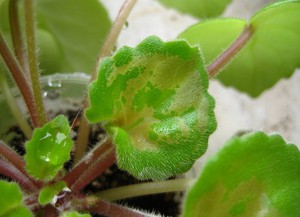 the first step is to transfer flowers infected with thrips to a separate room. However, you need to be very careful here, because during transportation, the larvae can fall off the pot and move to neighboring plants;
the first step is to transfer flowers infected with thrips to a separate room. However, you need to be very careful here, because during transportation, the larvae can fall off the pot and move to neighboring plants;- remove pests from the flower by putting it under the shower;
- treat all indoor plants in your apartment with special preparations. The following institutes will help you cope with thrips: Aktara, Mospilan, Fitoverm, Intavir, etc. To consolidate the result, it is recommended to re-spray after a week;
- It is recommended to install sticky blue or yellow traps around the perimeter of plants;
- having determined in which pots the thrips have already started, it is necessary to remove the topsoil, and it is best to remove all the soil, rinse the roots and transplant the plants into the already cultivated soil;
- all parts of the plant where pests have been found must be thoroughly rinsed.
How to deal with thrips on indoor plants with folk remedies?
If you have noticed only a few larvae from thrips and the plants are not yet completely affected, then you can choose softer ways to fight with this pest, in what folk remedies can help you:
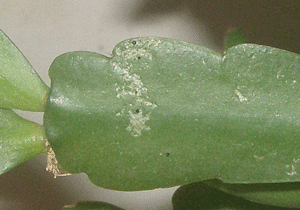 an infusion is made from one teaspoon of chopped onions or garlic and a glass of water.In a day, when the product is ready, plants are treated with it;
an infusion is made from one teaspoon of chopped onions or garlic and a glass of water.In a day, when the product is ready, plants are treated with it;- it is necessary to take dry flowers of marigolds in the amount of half a liter jar, fill the container with water to the top and leave to infuse for two days. When the time comes, the mixture is filtered and the plants are treated with it;
- you need to take fresh dandelion leaves or roots in the amount of 50 grams, pour one liter of warm water and let it brew for three hours. After straining, it is necessary to spray the affected flower with the mixture;
- take 100 gr. chamomile, pour one liter of water and let it brew for 12 hours. After filtering, 5 g is introduced into the mixture. green soap, after which the plants are treated with it. After a day, the remnants of the product must be washed off under a warm shower;
- you will need dry shredded tobacco in the amount of half a glass, which must be poured with one liter of water and put for one day for infusion. Strain the finished product and add an additional 1 liter of water. This infusion is sprayed on diseased plants;
- you need to take 50 gr. dry tomato leaves, add a glass of water and let the mixture stand for 3 hours. After straining, water is added to the infusion to bring the volume to 1 liter. After that, they spray the affected plant;
- you need to take 50 gr. fresh blooming celandine, which can be replaced by 100 gr. dry raw materials. You need to add 1 liter of water to it and let it stand for a day. Next, the infusion is filtered and the plants are processed;
- sometimes spraying may not work for thrips. In this case, alternative treatments can be used. You need to take chopped garlic or turpentine, fill a small container with it and put it directly in a pot with a diseased plant. Then put a plastic bag on top of the flower and wait for three hours.
Preventive measures
In order not to deal with thrips on the first day after buying a plant, it must be chosen very carefully. Arriving home, it should be placed in a separate room and for two to three weeks monitor his condition... To prevent pests from spreading to other plants in your home, you need to regularly carry out the following activities:
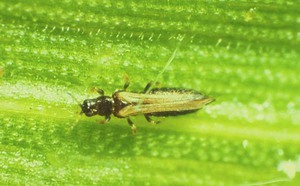 inspect plants regularly, paying particular attention to potential signs of pests;
inspect plants regularly, paying particular attention to potential signs of pests;- maintain optimal humidity in the room;
- keep sticky traps in the growing area of indoor plants;
- keep plants clean with a warm shower.
It is not always possible to completely destroy triops the first time. The fact is that after the measures taken, the larvae of this pest can, within a certain period of time, stay outside the plant, and later can return again. Therefore, it is recommended from the very first day, when a houseplant appears in your house, to start taking preventive measures, so that later you do not spend a lot of time and effort fighting these pests.
Conclusion
The joy of growing houseplants in your home can be overshadowed by pests. This is especially true of thrips, whose larvae can cause serious harm to flowers. Therefore, the first thing every florist should know about is by what signs you can identify these pests. It is equally important to know what methods of struggle can be used to destroy them. Although there are enough many effective drugshowever, this process can be quite lengthy. Therefore, it is best to start growing indoor plants with prophylaxis, which will avoid such difficulties and save a lot of time.
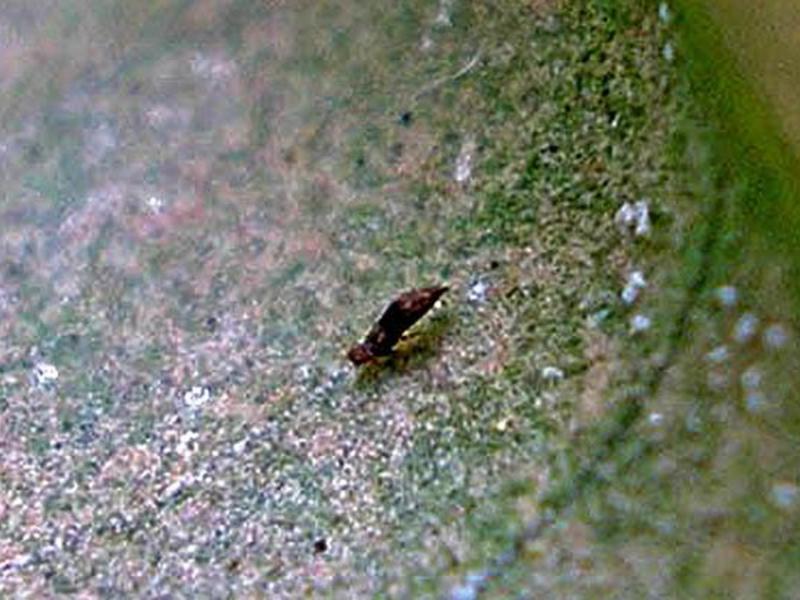
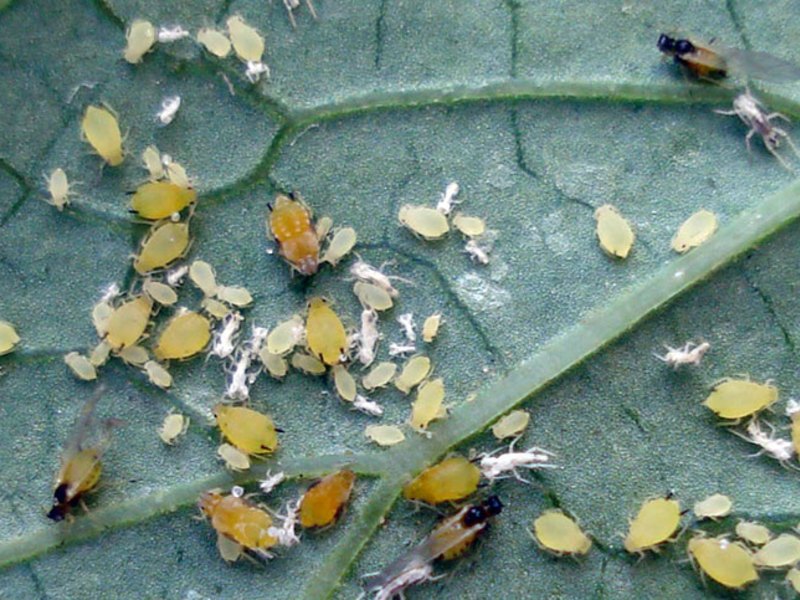
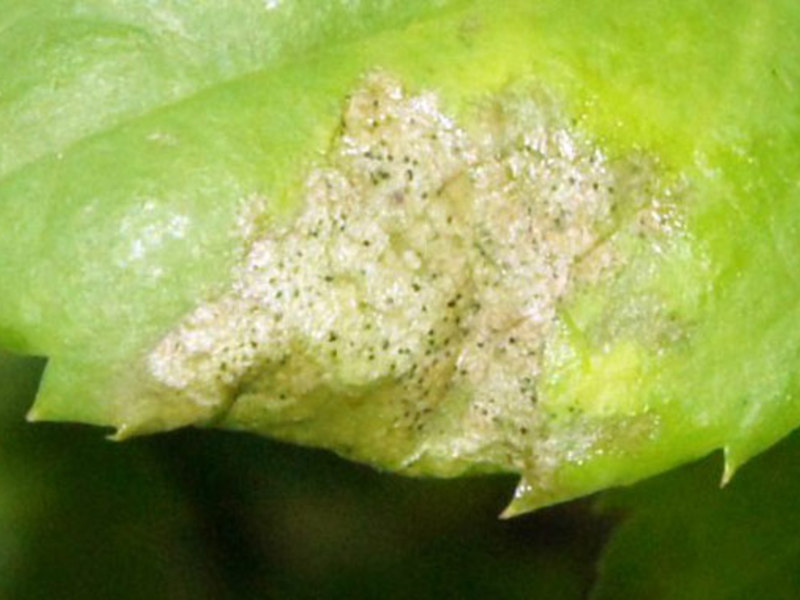
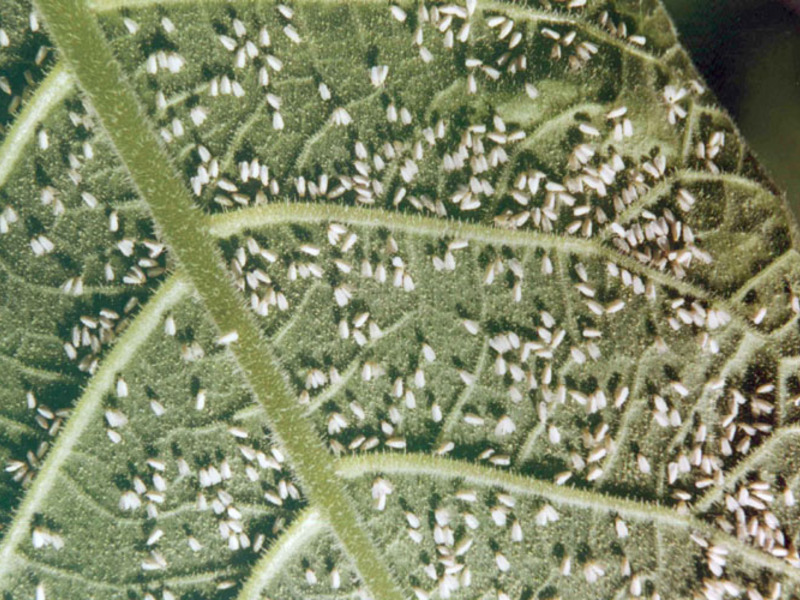

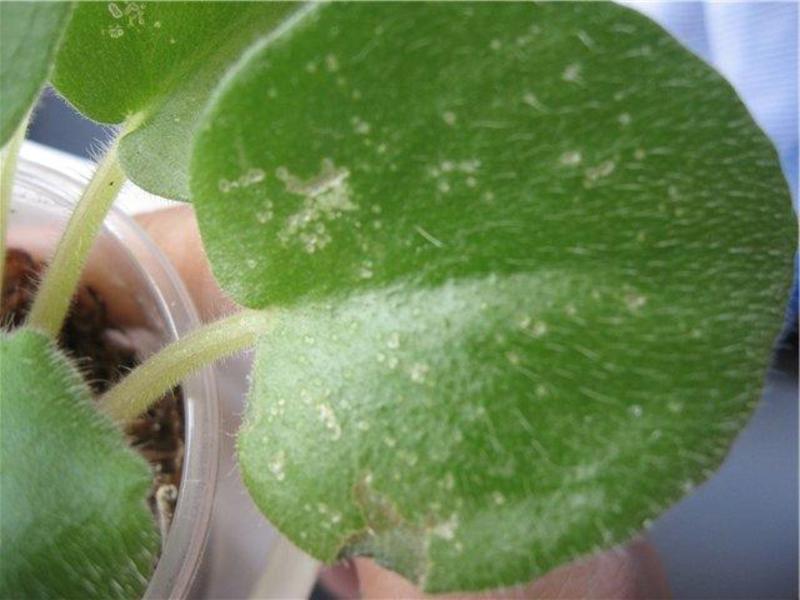
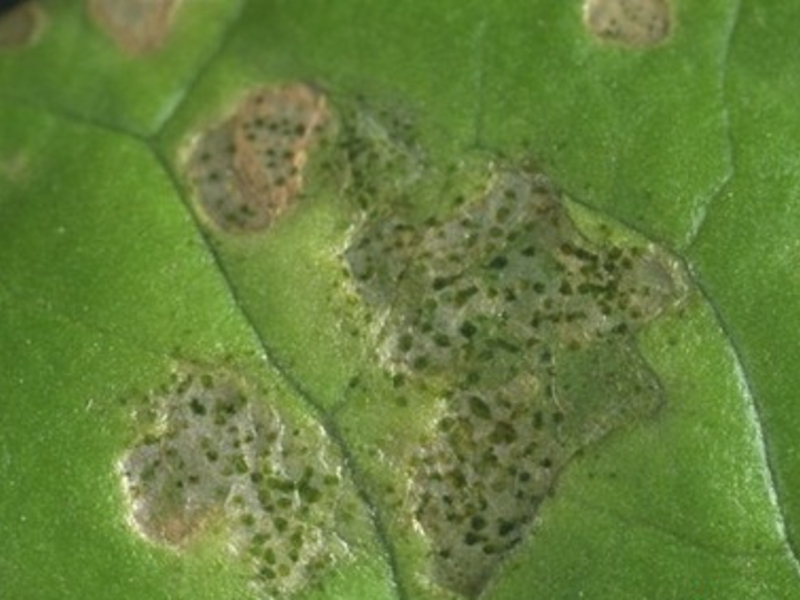
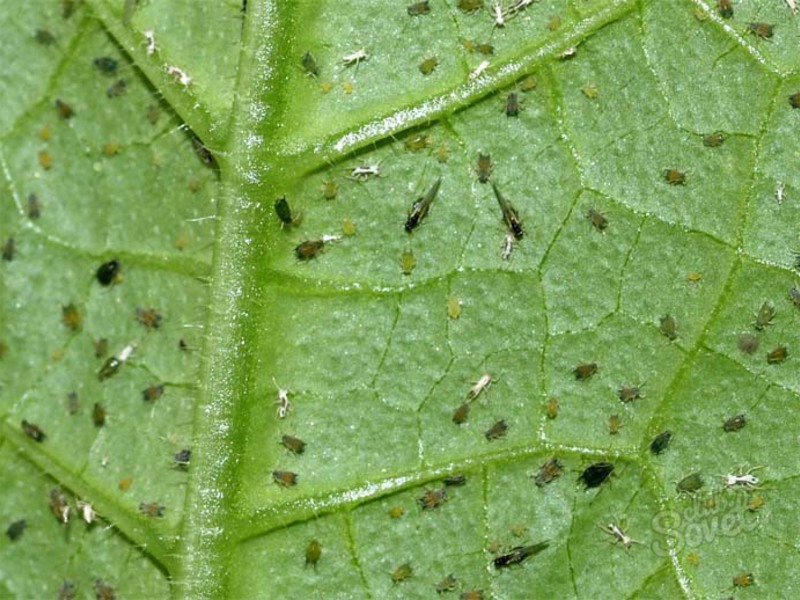
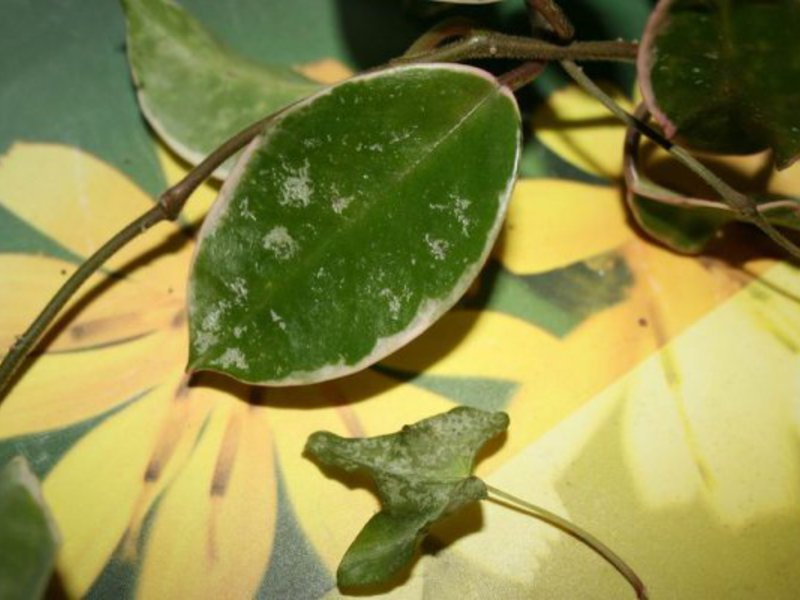
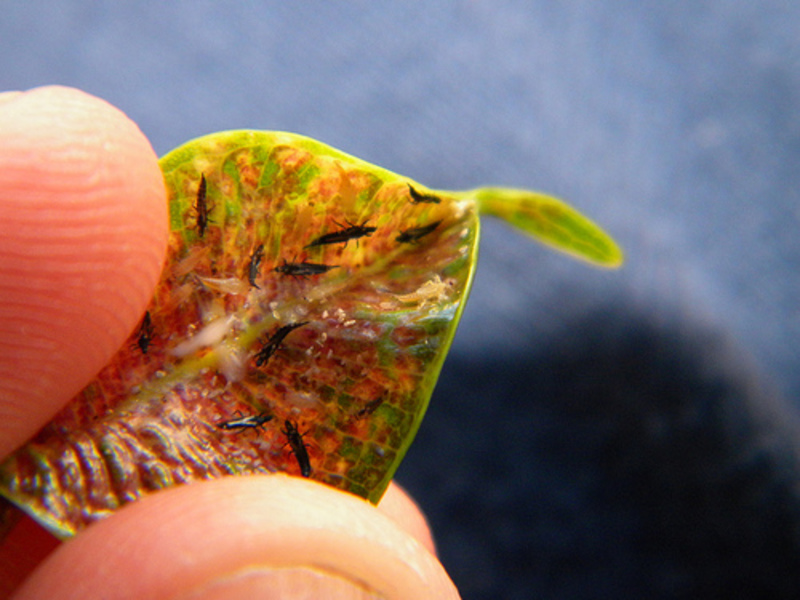

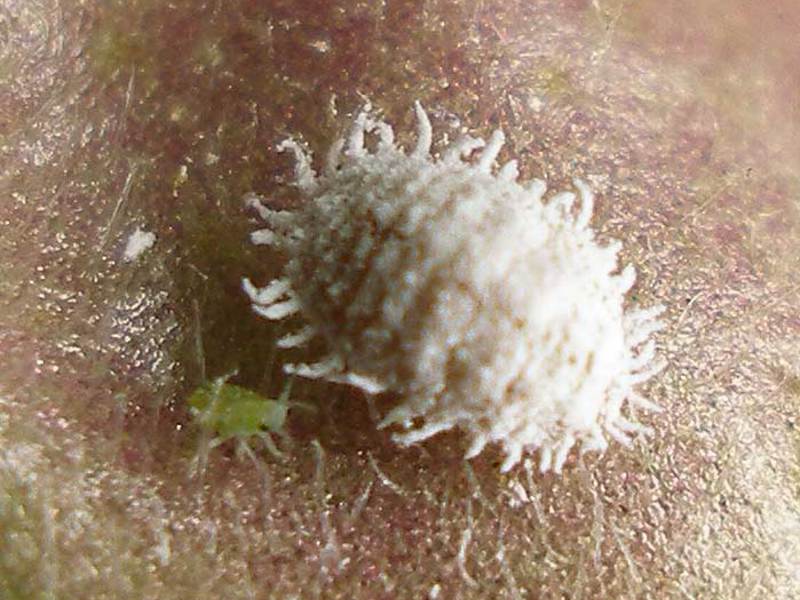
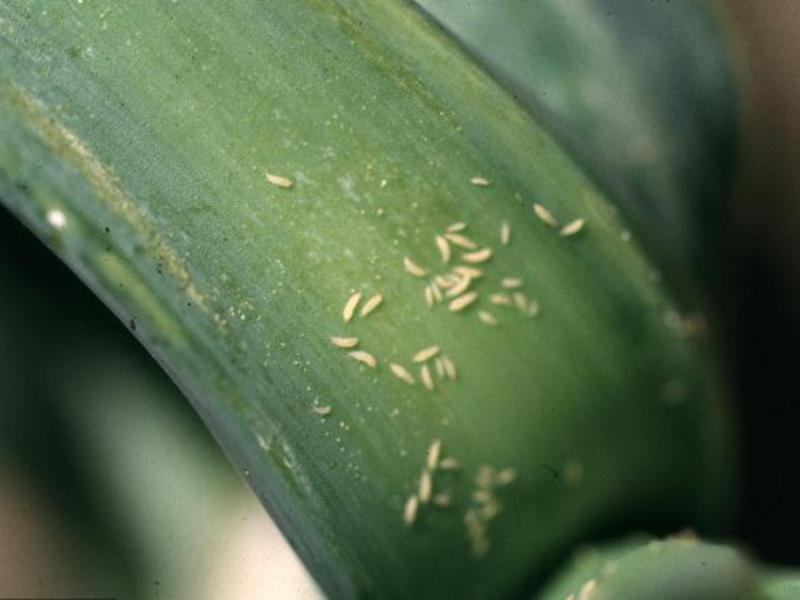
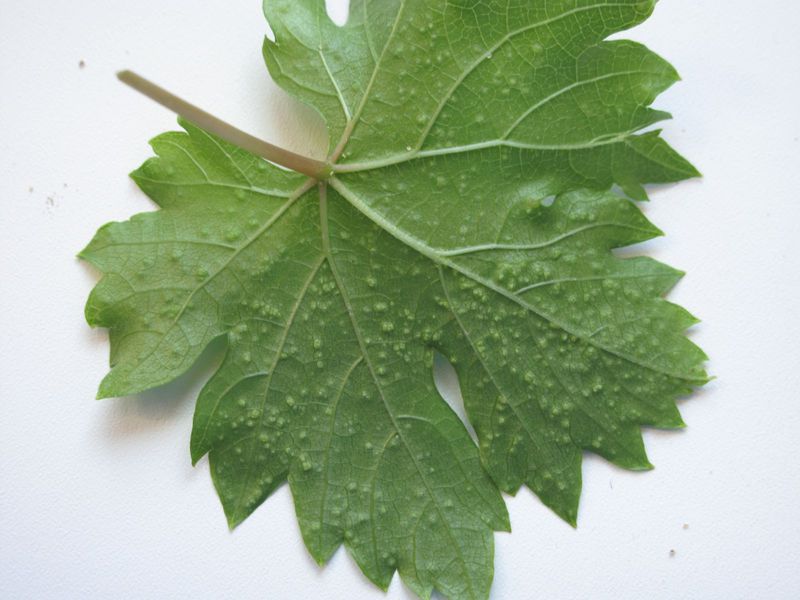
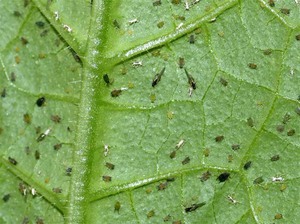
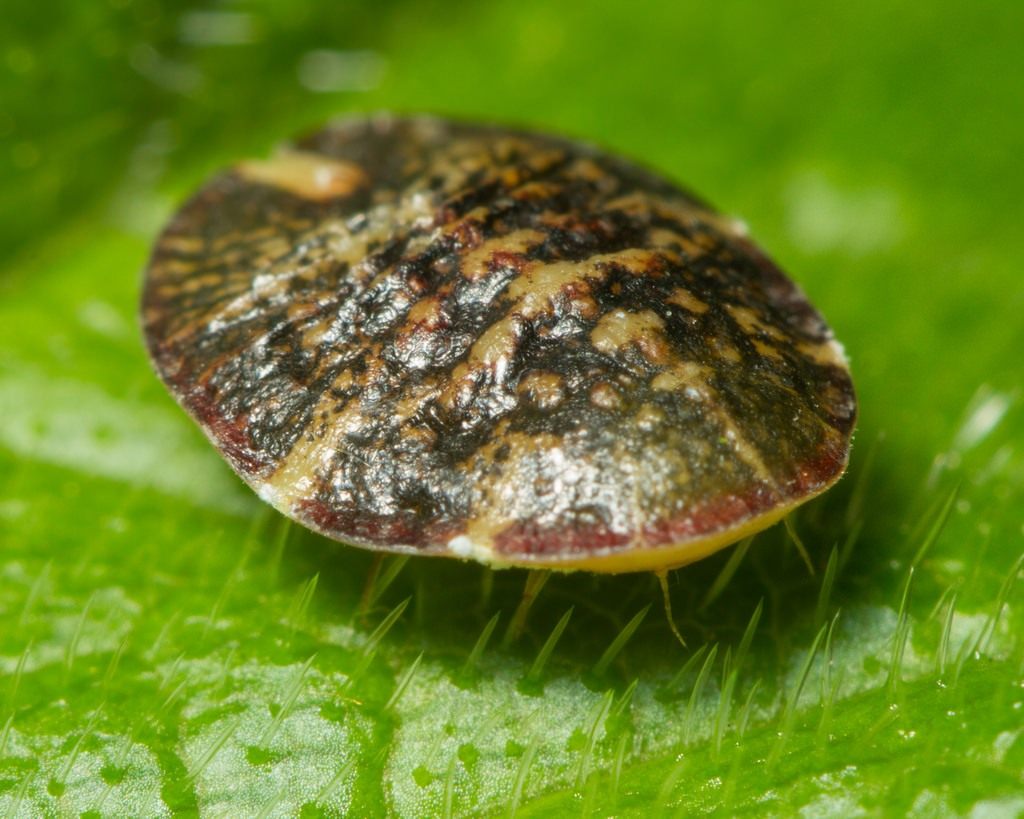
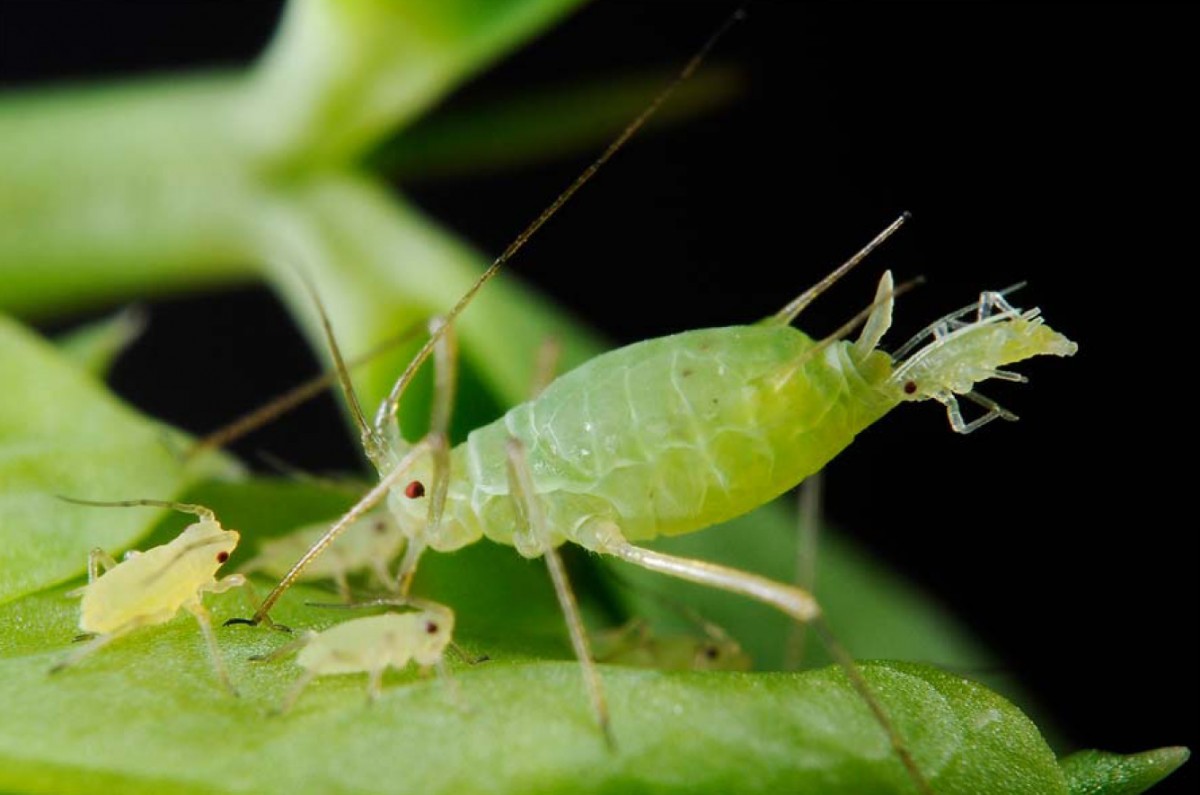
1 comment